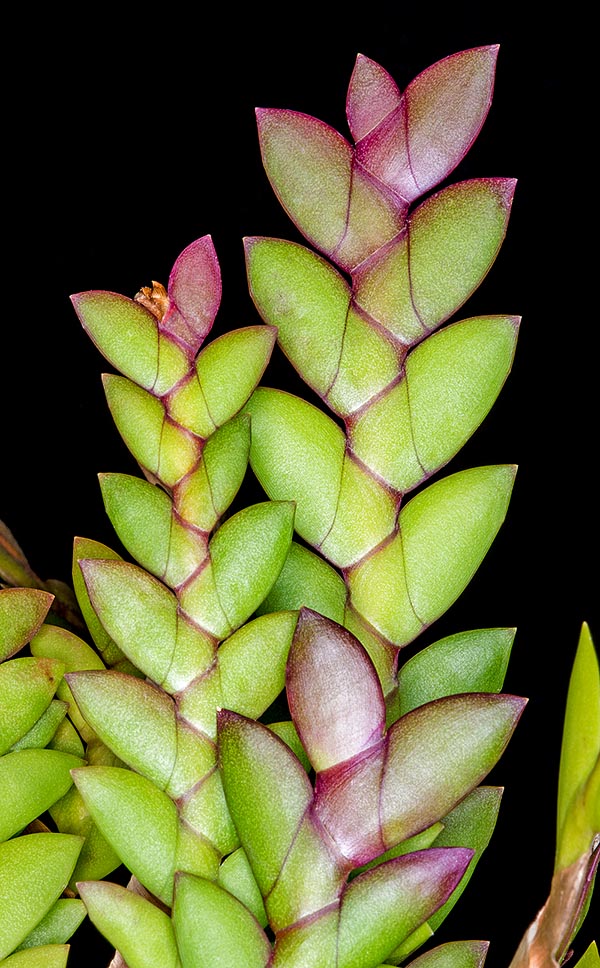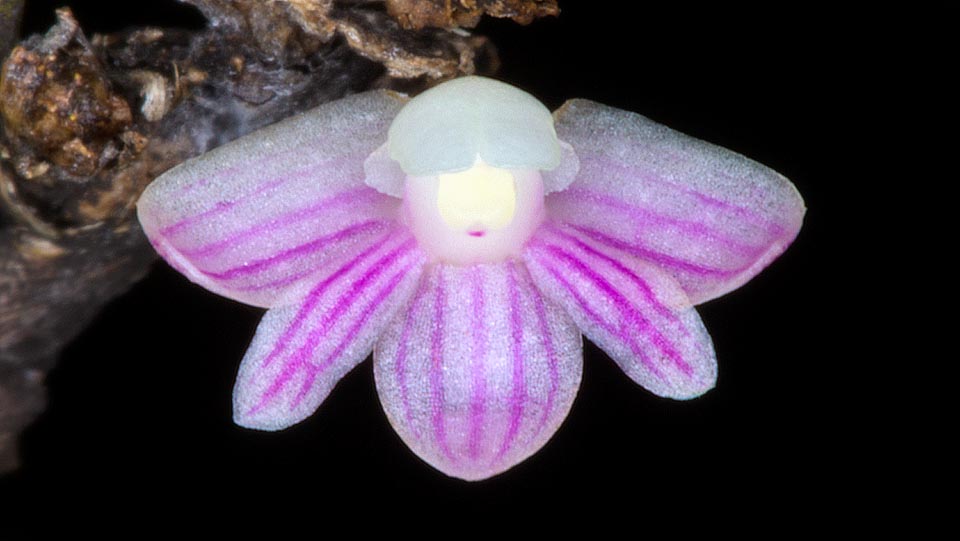Family : Orchidaceae

Text © Pietro Puccio

English translation by Mario Beltramini

Dendrobium ramificans is a Sulawesi and Moluccas epiphyte with 15-30 cm close, ramified, stems © Giuseppe Mazza
The name of the genus is the combination of the Greek substantives “δένδρον” = tree and “βίος” (bios) = life, with reference to the numerous species of the genus living on the trees; the name of the species is the Latin adjective “ramificans, -antis” = ramifying.
The Dendrobium ramificans J.J.Sm. (1904) is an epiphytic species with close stems, ramified, 15-30 cm long with a distance between the nodes of about 1 cm, provided for almost all their length of alternate leaves, distichous, imbricate, equitant (at a single face with lamina folded in two along the central vein), elliptical with acuminate apex, 1,5-2 cm long and 0,6-1 cm broad, fleshy.
Subsessile inflorescences from the upper nodes bearing numerous white flowers with purple veins, of about 5 mm of diameter, surrounded by dry scales, opening in succession.
Ovate dorsal sepal with obtuse apex, 2,5 mm long and 2 mm broad, ovate-triangular lateral sepals with obtuse apex, 3 mm long and 3,5 mm broad, united at the base to form a sort of spur (mentum).
Oblong petals with obtuse apex, 2,5 mm long and 1 mm broad, trilobed labellum, about 5 mm long and 2 mm broad, with triangular lateral lobes and oblong median lobe with obtuse apex, 3 mm long and 2 mm broad, and about 1 mm long column.
Pedicel and ovary long about 5 mm.
It reproduces by seed, in vitro, and at amateur level by division.
Miniature orchid present, outside the origin zones, almost exclusively in botanical gardens and specialized collections.
It requires a partially shaded and aerated position, medium-high temperatures, 20-32 °C, almost constant during the year, high humidity, 70-85%, and regular waterings, but without stagnations, utilizing rain water, demineralized or by reverse osmosis.
It can be cultivated in pots or baskets, with draining compost based on medium-sliced bark fragments, or mounted on pieces of bark or rafts of cork or of roots of arborescen ferns covered by sphagnum.

Alternate 1,5-2 cm fleshy leaves, distichous, imbricate with lamina folded in two along the central vein. Flowers of only 5 mm opening in succession © Giuseppe Mazza
Synonyms: Aporum ramificans (J.J.Sm.) Rauschert (1983).
→ For general notions about ORCHIDACEAE please click here.
